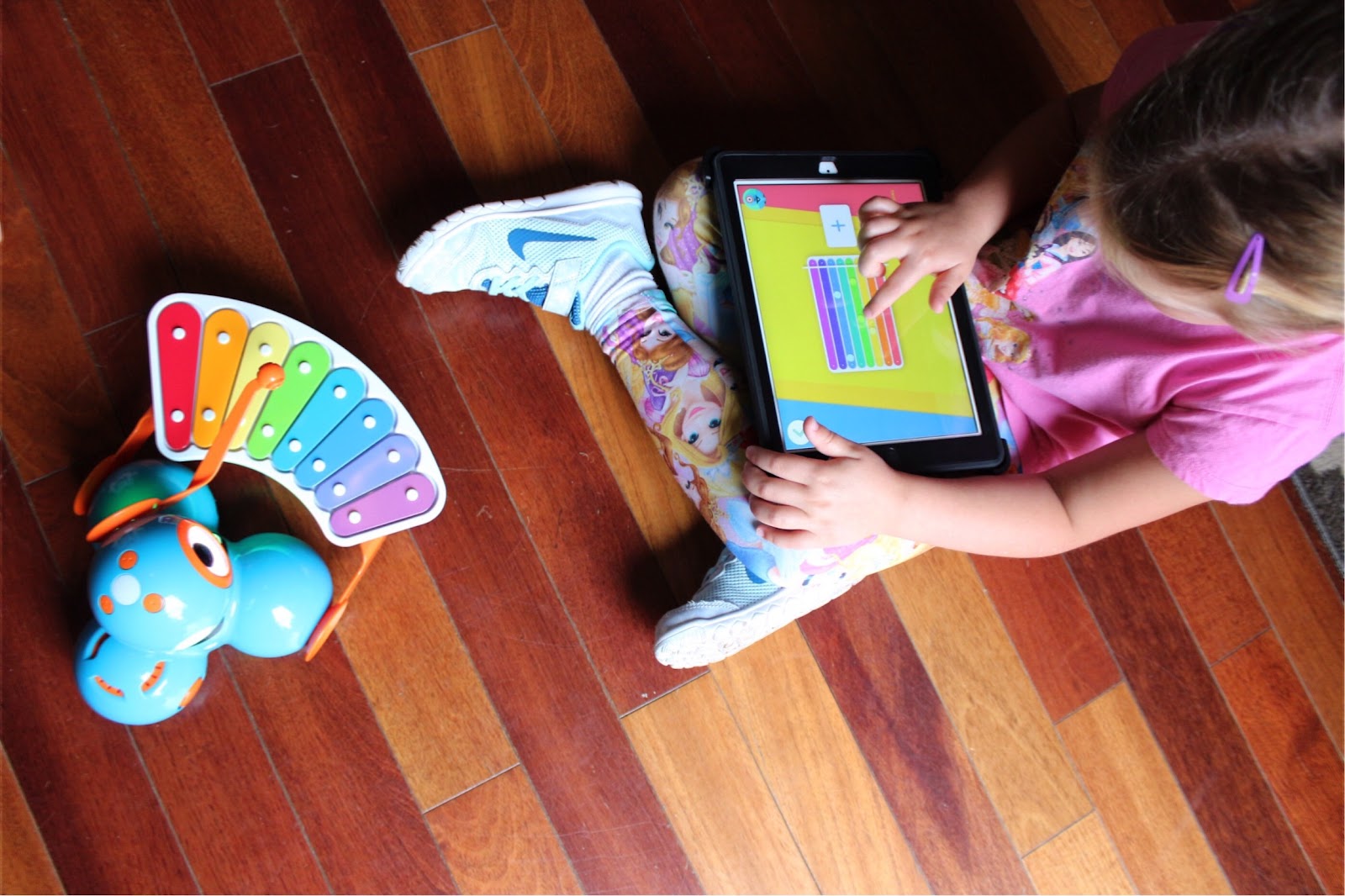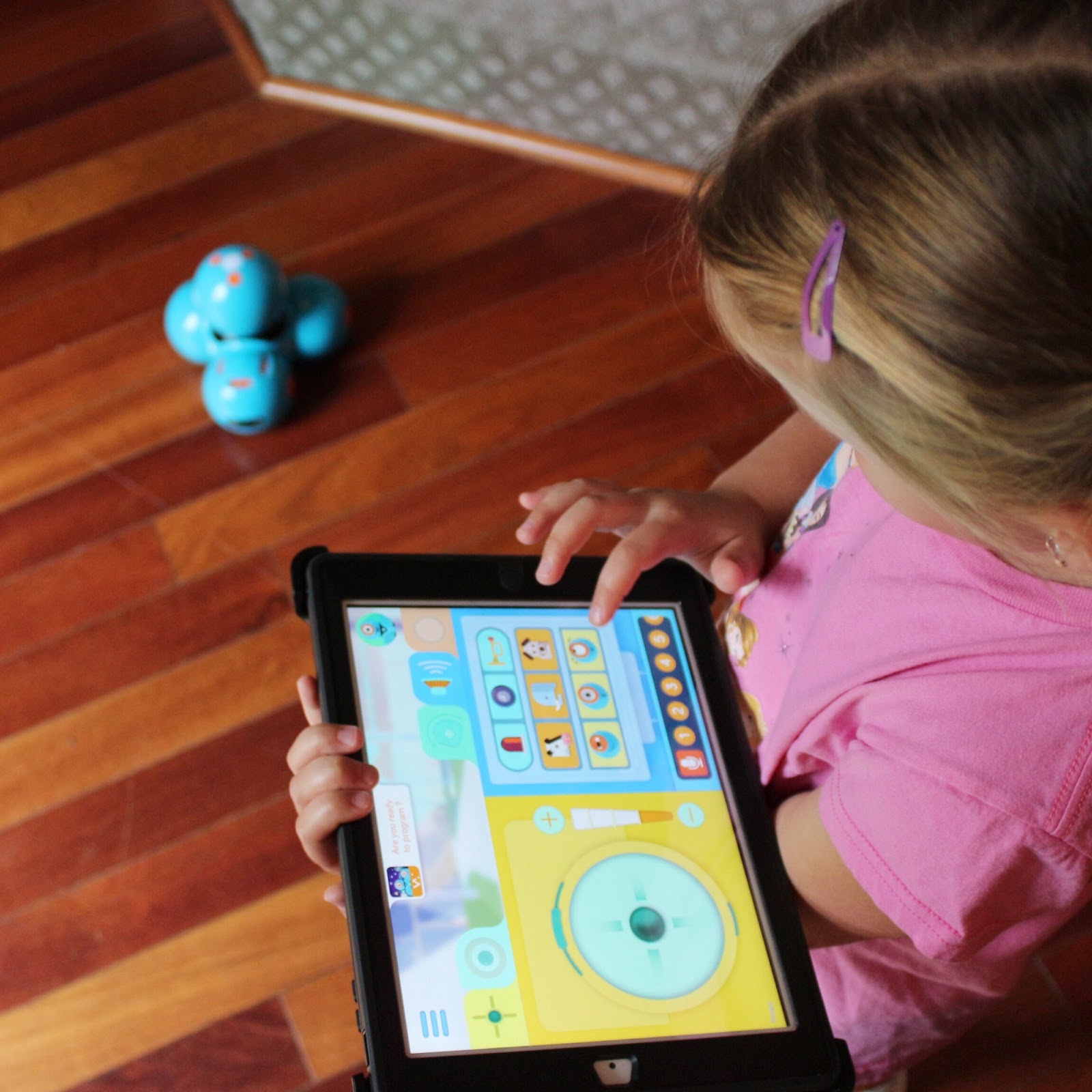Dot and Dash
Being a STEM coach at a public school and a mom has its advantages. I get the newest STEM toys and gadgets and I get to try them out on my own family! Everyone wants to get toys for their kids that will teach them something, but that’s not even enough anymore. We need toys that challenge our kids to solve problems and to think and look at things differently. So now everyone is on the STEM kick and every toy supposedly is a STEM toy now because that’s what sells. Well, hopefully I can give you some insight into some of my favorites and then you can decide for yourself which STEM toys are for your family. My favorites are the robots. Robots are the toys of the future and several companies have some products that I just absolutely love and so do my students and my own child.
Let’s start with Dot and Dash. 
Dash stands a little under 7 inches and looks like 3 balls stuck to a body with a head on top. The head has a single eye that is made up of 12 led lights. If you flip Dash over you will see 2 large wheels and another smaller wheel that allow Dash to have a pretty good range of movement. Now this is a robot that you operate using a supported Android or iOS device and you can get a full list of those on their website www.makewonder.com Dash links up to your device via bluetooth and has really simple on screen demands that make sure they are linked and are super kid friendly. Dash is sold as a robot for kids 5 and up and I was interested to see just how my 5 year old test subject would fare with the robot.
Dash has varying levels of difficulty apps, but I would strongly suggest getting your feet wet first with the GO app. It makes Dash a simple remote controlled robot that your child can move around. Simple.
My 5 year old immediately picked it up and without any direction from me started using the GO app right away and moving Dash. This app is nice, but I don’t think most people will buy Dash to simply let their kid control it like a remote controlled vehicle. Once the novelty of simply moving Dash around, we moved onto the Path app. This app allows you to program Dash to follow a path. I think this is really where I saw my child’s imagination take flight. She had her own personal chariot that would deliver messages to the Queen of her Kingdom. It was a lot of fun and I saw her really using problem solving strategies and trial and error to get Dash to avoid obstacles along the way. 
She then ventured to the Blockly app that is a drag and drop programming app that says it’s for kids 8 and up. I would strongly suggest letting your little ones try this one. There may be struggles to understand at first, but once they understand the drag and drop then the possibilities truly are endless. WIth this app, you can make Dash talk, change the colors on it, look left or right, move in any direction and as far as you want. You can pretty much program Dash to do just about anything you want, within its parameters. My daughter enjoyed this app but needed my help really understanding how it worked. So it made it a great activity for us to do together and make up magical adventures that Dash had to perform. The other app Xylo requires the xylophone accessory, but it is worth it. Your child can make dash into a musician and do musical performances with just a little programming and imagination.
This robot is one that I strongly recommend. It sparks curiosity and creativity and helps foster critical thinking skills. Not only will your child be immersed in the world of robots but also learning the beginning stages of coding in a fun way.





































